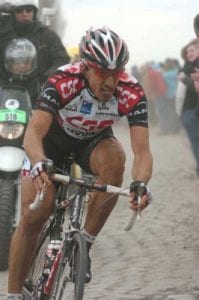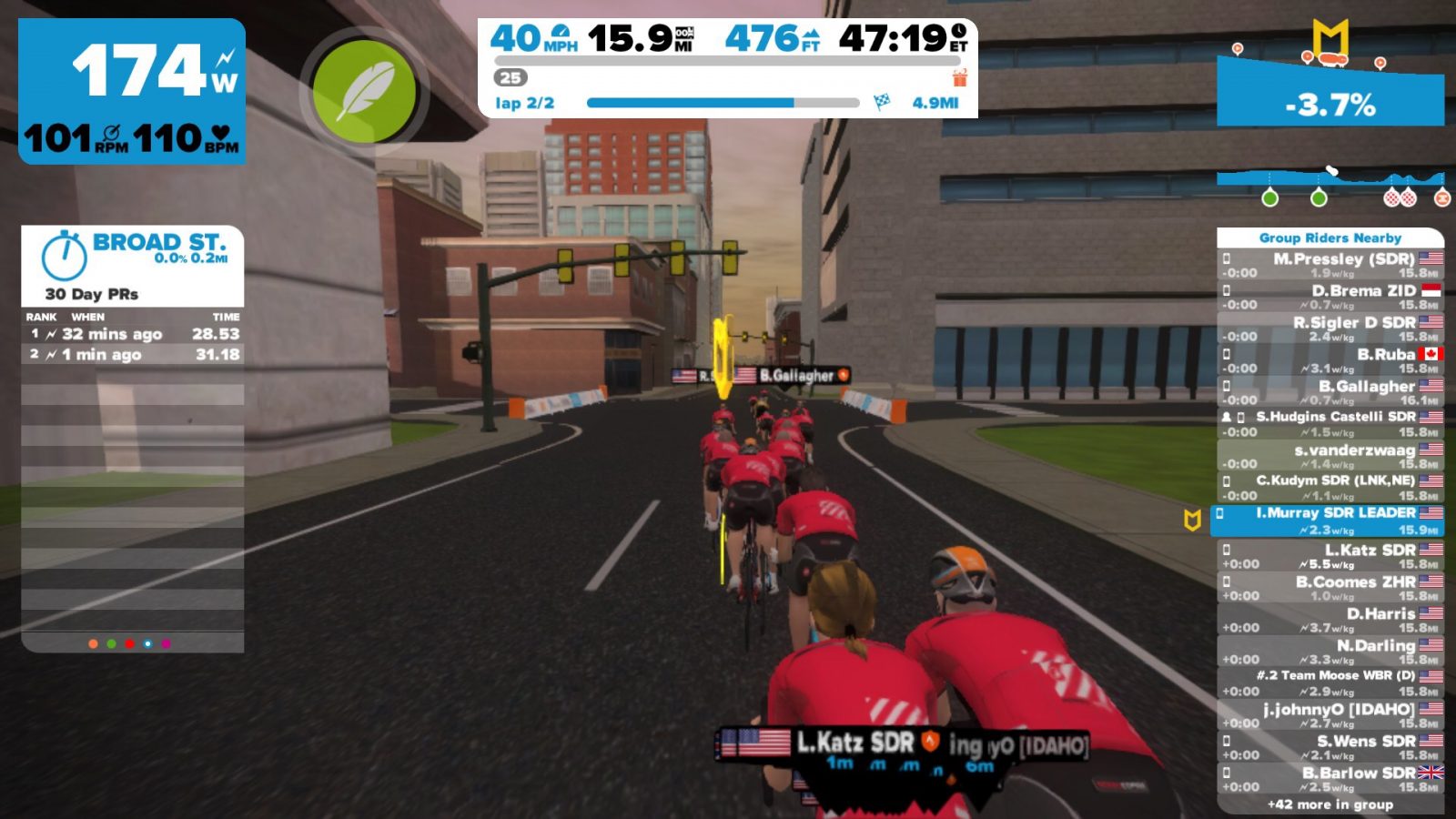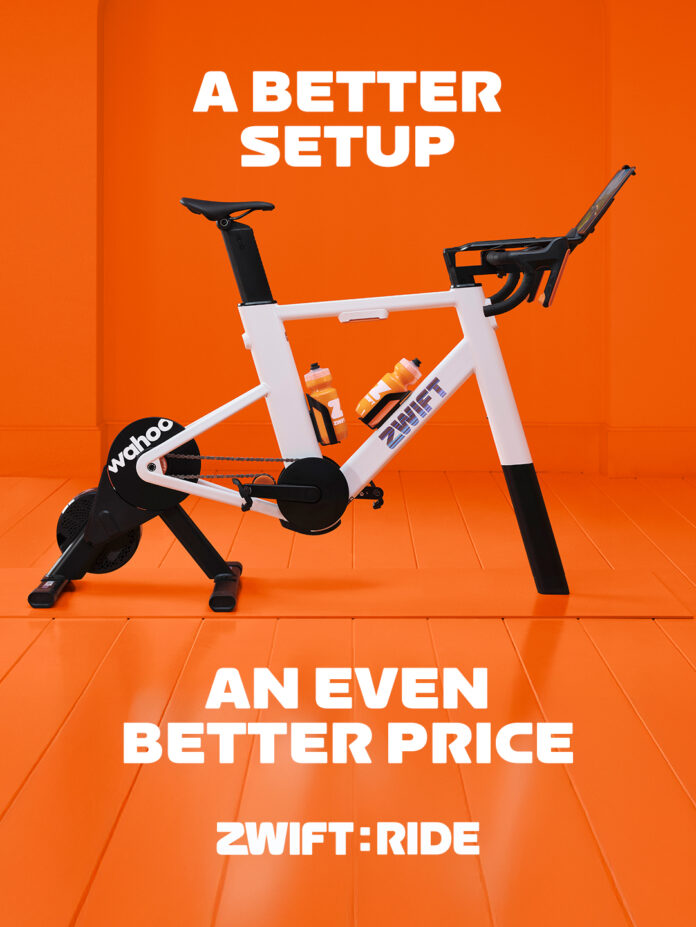Great races are often defined by a bold move by one of the participants. In many of the great cycling monuments, that move usually follows someone else’s “foolhardy” move. At the end of the day, the only difference is that one racer’s move was caught, and the other’s was not. More often than not, we, as racers, have only a little control over the success of our moves, so we should do our very best to ensure that the odds are in our favor as best as possible.

That, my friends, brings us to the lesson for today and the theme for the next couple of weeks, the counter attack. One of my favorite races to watch is Paris-Roubaix. Sure, I love watching guys fly off into the ditches on the cobble sections as much as anyone else, but it is such a tactical race. My favorite editions include wins by Stuart O’Grady, Tom Boonen, and Fabian Cancellara. They didn’t roll everyone in a sprint finish. For those not paying close attention, it is easy to say that they simply attacked off the front. That is simply untrue. They all won by successfully counterattacking at the most opportune time. We’ll get back to that in a minutes.
We had a pretty solid group today of around 60 people, all decked out in our stylish Castelli kits, and I have to say that I was pretty impressed with the way nobody bolted out of the starting pen. So, I have to give my thanks for that. Like normal, we departed at 1.5 W/kg out on the course of the day, which happened to be the Richmond UCI course. Over Discord (which if you are not on, you should be. Check out http://TeamODZ.com/discord for instructions), we went over the plan of the day and discussed the importance of working through the difficulties of maintaining your position in the peloton. We finished up our warm-up and group dynamics portion and got to the meat of the class.
Iteration One: Common Scenarios
The plan for today was simple. One rider would go off the front. Not very far or very hard, but enough to allow us to chase. I also placed a 3.0 W/kg threshold cap on everyone to prevent a few stronger riders from blowing up the group, limiting the participation of the riders with a lower power output. Additionally, I was able to use that cap to highlight the appropriate times to launch a counterattack. The first iteration was very straightforward. The solo attacker surged for 30 seconds off the front and then sat up to a 2.0 W/kg pace, simulating a fatigued rider. The group chased at a 2.5-2.7 W/kg pace, simulating a high-tempo chase but below a threshold effort. Just as we caught up to the attacker, I instructed the group to attack over the top of the “fatigued” rider. After attacking for just long enough to get a gap, we all sat up and regrouped.
This iteration simulated two separate types of race scenarios…
Scenario One
First, when a small group chases down a single attacker or other small group that has been away for a while, it is often advantageous to immediately dispatch the caught rider(s), preventing them from sitting on and recovering enough to attack you later in the race. Unless you really believe that you need additional riders in the group to stay away from the main field, it is better to get rid of them. Remember, those breakaway riders are not likely to contribute to the group due to fatigue (with the exception being that he/she sat up to join the group on purpose). Having extra passengers is not useful, especially if they are just recovering to beat you in a sprint finish. Only keep them around (assuming that you can drop them) if you believe that the rider(s) will contribute to the work.
Both Cancellara and Boonen perfected this tactic during their Spring Classic campaigns. As the field split up, they would use small groups, usually including one or more teammates to chase down the break of the day. Almost immediately upon making contact, they would unleash their fury and go nuts. The key was that they limited the amount of work they did during the chase and timed the counter to perfection. While there was no lull in the pace, the mentality of the chase group was one of a brief pause. This created the opportunity for riders who were clearly on top form and able to dig into the depths of pain to summon a tremendous surge.
Scenario Two

In the second scenario, catching a break often has a psychological effect on the bunch. If the chase has been long and hard, there may not be much desire to chase down another break right away, or there may be sufficient distance left in the race that the group is willing to let another break, perceived as possibly less dangerous, to get up the road. Either way, an immediate counterattack, done at above threshold level, may be sufficient to get a sizable gap for the main field to not chase right away. I am not going to lie, the second scenario is not very common and is very difficult to pull off. You will likely need teammates to disrupt the chase from the outset, or you better have done almost no work during the previous chase. If you want to pull scenario 2 off, you will need to channel your inner Steve Cummings from Dimension Data, as he is a prolific tail gunner with impeccable timing on his counters.
Iteration Two: The Lull
Iteration 2 focused on counterattacking at the “lull.” The lull often happens after a catch and is similar to scenario one in Iteration 1, but it is different. Watch any pro race where the break is caught with more than 15 to 20 kilometers to go. The peloton goes from being strung out or arrow shaped to being spread across the road. Sometimes, the entire peloton is content to take a breather and wait for the final fireworks. More often than not, the wiley opportunists take the chance to have a go and get some camera time. The key to the lull counterattack is to identify the lull as it begins, rather than waiting until the entire peloton is looking around. Once the pace has dropped and settled, you have lost the element of surprise, and your counterattack is likely doomed to fail. If you can identify the lull as it happens, you can jump the group while the pace is dropping, limiting the reaction time, and increasing the odds that the counterattack will result in success.
Our faithful attacker launched again on another 30-second surge before settling in to a 2.0 W/kg while the group chased at 2.5-2.7 W/kg. As the group closed on our attacker, he picked up the pace to just below that of the group, raising it to the group’s pace as the catch was made. I instructed the group to hold off on the counterattack until they identified our attacker’s lull. Since our group wouldn’t lull on its own, we used the attacker as the cue. Once our attacker dropped his pace, the counterattack was on. Recognition of the lull was a little slow, but I knew that we would have more practice later in the ride.
Iteration Three: Don’t Counterattack
Iteration 3 can be best described as the “Don’t Counterattack” counterattack. Basically, it can be summed up by two words: angry peloton. It’s pretty simple. If the group catches the break and keeps the pace high, e.g. near your limits, that’s a good sign that any counterattack is pointless, and you will be punished for your insolence. Seriously, I have seen it a number of times, and it never ends well. The group is completely strung out, and some idiot tries to counterattack, anticipating a lull. The rider will go off the front for a few seconds, as the entire matchbook gets lit and burned up quickly.
The futile attack is usually caught within a minute or two, and the attacker is subsequently spit out the back of the group, left to his/her own suffering for the remainder of the race and completely blown to bits.
To simulate this situation, we launched our attacker off of the front and began our chase. Similar to Iteration 2, the attacker stepped up the pace when the group closed in on him. As the group closed to within two seconds, the attacker picked the pace up to 2.8-3.2 W/kg. Remember, we had a cap of 3.0 W/kg, so nobody was able to launch a counterattack without significantly going over the limit.
We finished off the class with a few minutes of me going to the front to simulate an attacker just off the front of the bunch. I kept the tempo between 2.7-3.0 W/kg and instructed the group to counterattack when they felt/saw my pace dropping, creating an opportune time to do so. Each rider only attacked long enough to get a gap and then returned to the bunch to practice again. We rolled like that for a few minutes until we came to the big climb.
There, we had a little fun, lifting the pace for each third of the climb. At the top, we sent our attacker off the front one more time with the instructions to “implode” on the 23d Street climb. This last treat simulated the opportunities for a counterattack that happen on courses that end with punchy climbs, think Liege-Bastogne-Liege and Amstel Gold. Often, the original attacker is too fried to hold a hard effort up the steep climb because the matchbook got emptied trying to get away. Our group rode steady, but hard, into the climb and then hit the gas. Almost everyone was able to pull our attacker back and drop him. It hurt, but it was successful.
As we wrapped up, I tried to highlight the tactical importance of the counterattack. Too often, the counterattack is mislabeled as merely an attack. Tactical patience is a valuable skill that becomes all the more valuable when you do not have teammates around. It is not possible to cover every attack, so you have to pick moves that offer the greatest efficacy or chance of success.
On our next session, we will be covering the second part to the counterattack, and it is the part that sucks the most. It’s the actual effort. We covered this briefly a few weeks ago, but that focus was simply the attack. We’ll switch it up a little bit this class, and it’s going to be a little tougher of a class. Make sure you hydrate ahead of time and come a little warmed up. Until then, Ride On!

